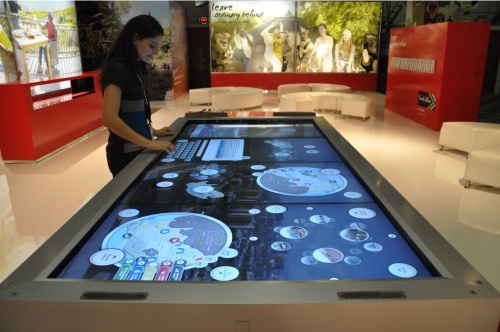Hi everyone, here is a question for reflection:
Set up for the question: Obviously, laptops and desktops have a horizontal, landscape orientation, while phones and all but the largest mobile devices are thought of as vertical and portrait orientation. Anyone who has had to create a UI that works both for computer and mobile devices must find this a headache.
What I am pondering is, why has no one tried to get these two experiences to line up? Why are there no vertically oriented screens for laptops and desktops? I am imagining something as wide as a laptop, but 1.5x - 2x as tall? Maybe they could fold in half for transporting the laptop. Or maybe it would a laptop screen that rotates like a pinwheel on a stick behind it. Or a thin screen that rolls open to whatever height you like, similar to a pull down movie screen in an old classroom. I don’t know.
What would be the advantages and disadvantages of portrait orientation desktops and laptops, thinking generally, but also of TiddlyWiki specifically?
Some initial thoughts:
- I would think that outliners like Dynalist and Streams would definitely benefit from a vertical orientation.
- I would think that reading services like Scribd and Kindle and would benefit, too. One could get more text on the screen for context’s sake. Scribd feels terribly cramped on my decent sized laptop screen.
- Programs that are topbar heavy (Word, Google docs, etc) would feel less cramped.
- Setting width=“100%” for images would not be an issue anymore for either vertical or horizontal images as it is now.
- Editing tiddlers wouldn’t feel as cramped.
- Story river would feel more like a river than a puddle.
- Cons might be: extra cost if screen is taller, more likeliness of breaking the screen, more clunky or heavy to transport.
- I did find this: https://www.quora.com/Why-are-there-no-laptops-with-vertical-screens
(Maybe we already have this. I haven’t tested out the fancy laptops with swiveling screens. I thought they only offered face-forward and face-backward, not vertical vs horizontal options. Or maybe someone out there offers them as alternatives for desktops. I did see an IPS strip on Google that goes either way)
Anyway, I would love to hear your reflections on this. Blessings.





 . Lol! It is true. But, just FYI these “table-top” monitors cost less than a high end monitor for colour correcting. It is rarely noticed that colour on the internet is terrible and terribly inconsistent. If you edit images you took yourself getting them to resemble online what you took is a nightmare of super-expensive tools. This is OT. So 'nuff said.
. Lol! It is true. But, just FYI these “table-top” monitors cost less than a high end monitor for colour correcting. It is rarely noticed that colour on the internet is terrible and terribly inconsistent. If you edit images you took yourself getting them to resemble online what you took is a nightmare of super-expensive tools. This is OT. So 'nuff said.

